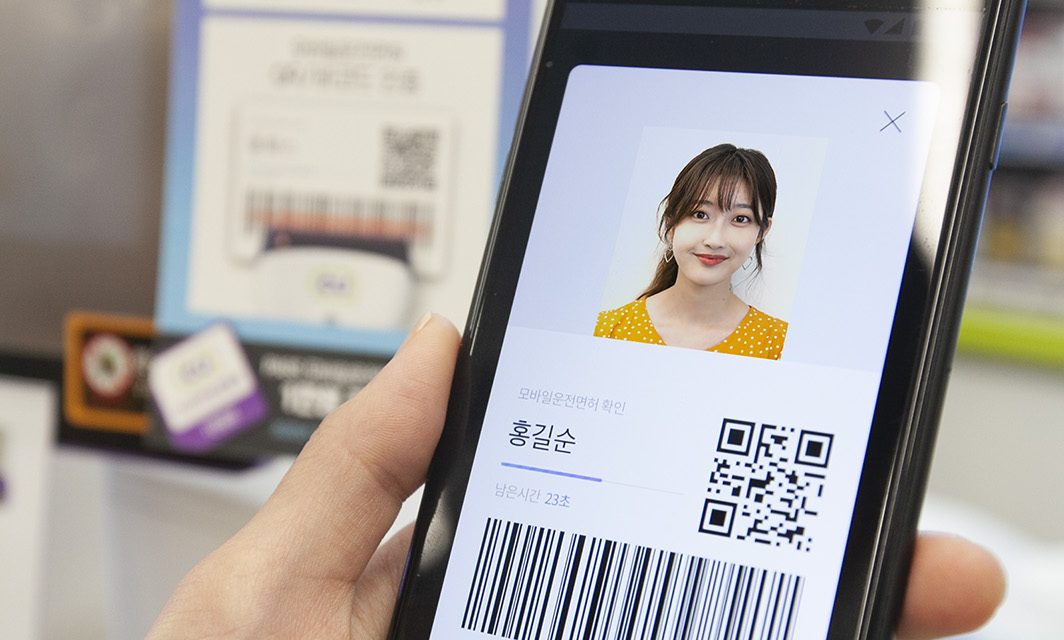KT, SKT, and LG U+ announced on the 23rd that they will launch a ‘mobile driver’s license verification service’ that can prove their driving qualifications and status online and offline using ‘PASS’ app from the 24th.
This service was first legalized by digitizing an official ID in Korea. Three telecom companies obtained temporary regulatory approvals in September last year through ICT regulatory sandbox of Ministry of Science and ICT. National Police Agency and Road Traffic Authority participated in the development.
To use a mobile driver’s license, you must first run PASS app on your phone and take a photo of your driver’s license in accordance with the guide. When it’s complete, the license number is automatically recognized. Subsequently, registration is completed through authentication.
In the license registration stage, PASS-based identification is performed. Since the authentication of the user’s mobile phone name and the device authentication are performed in real time, the license of another person cannot be registered. In addition, the driver’s license system of National Police Agency can be used to immediately check the authenticity of the driver’s license information, and it is not possible to register a license that has been revoked, forged or tampered with.
The mobile driver’s license was created based on the blockchain network. Through this network, it is contrasted in real time with pictures of actual licenses registered with the National Police Agency and the Road Traffic Authority. Therefore, when a user registers a driver’s license in the PASS app, it is possible to simultaneously verify the authenticity of the terminal’s name and possession as well as the authenticity of the driver’s license information.
All information on the driver’s license registered in the PASS app is stored encrypted in the safe area of the user’s smartphone. The telecommunications company interlocks and manages the encrypted information and the minimum information necessary for verification to prevent personal identification, thereby preventing unnecessary exposure of the user’s personal information. The three telecom companies have established a dedicated line to Road Traffic Authority and National Police Agency’s driver’s license system server, which verify the authenticity of the driver’s license information, while enhancing security against external attacks by encrypting all sections.
A mobile driver’s license can only be registered for one smartphone in the user’s own name through one carrier. In addition, the basic screen consists only of a license photo, a QR code for authentication, and a barcode to minimize the exposure of personal information. The QR code and barcode for authentication are initialized after a certain time. Capture is also impossible because the screen is moving
This license will be used as an identification card to verify adulthood when buying alcoholic beverages or cigarettes at all CU and GS25 convenience store stores nationwide. The three telecom companies plan to cooperate with BGF Retail, which runs CU, in the long term to solve social problems caused by forgery, forgery, and identity theft through business agreements.
A mobile driver’s license will also be used instead of a real driver’s license when processing or renewing or reissuing a driver’s license at Gangnam Driver’s License Test Center in Seoul. In addition, car rental and shared mobility industries, where driver qualification is essential, are also being considered. National Police Agency is discussing how to apply the mobile driver’s license to the police administration, and the Airport Corporation is planning to use this service as an official identification method at the domestic departure hall this year.
Meanwhile, the three telecom companies are planning to hold the ‘PASS Summit 2020 Online Conference’ on the 24th to officially announce the launch of the ‘PASS Driver License Check Service’. The chairman of the Mobile Authentication Standards Association, Kim Hoon Bae, will present the purpose of the service and future plans.
관련
기사제보 및 보도자료: press@blockmedia.co.kr
▶ 블록미디어 유튜브 바로가기 https://www.youtube.com/blockmedia
▶ 블록미디어 텔레그램 바로가기 https://t.me/blockmedia
▶ 블록미디어 페이스북 바로가기 https://www.facebook.com/blockmediakorea/

